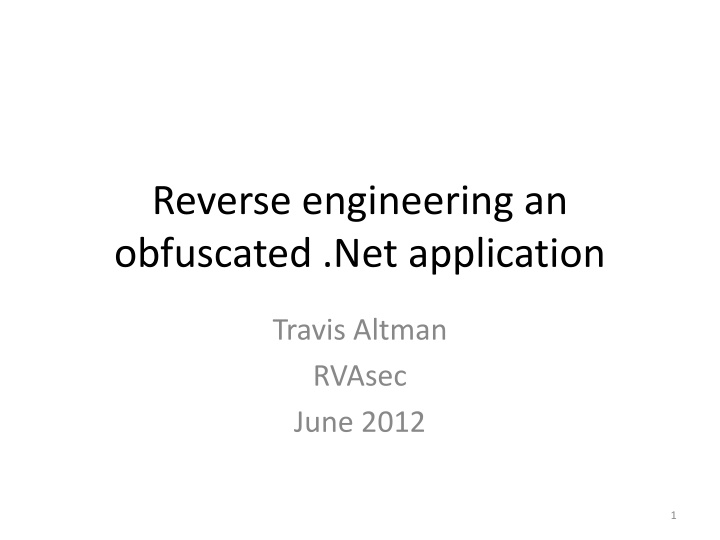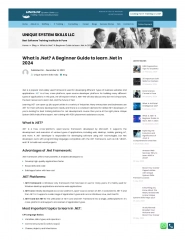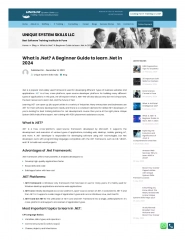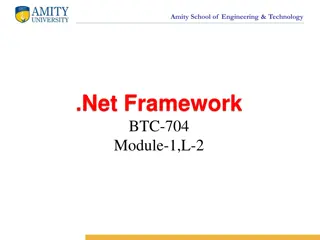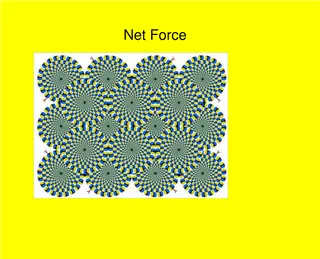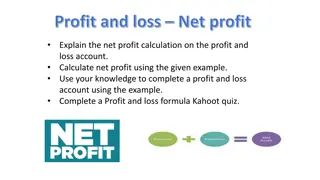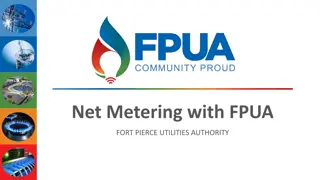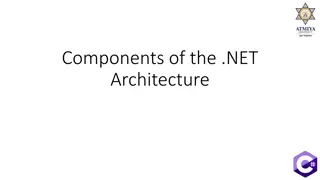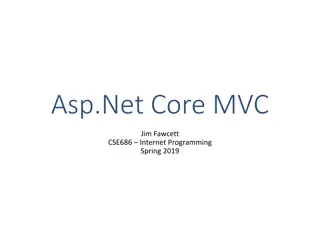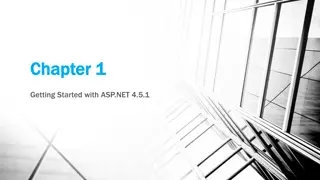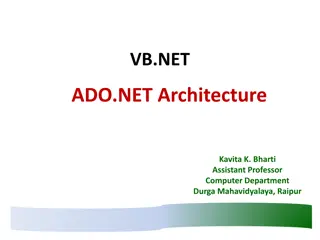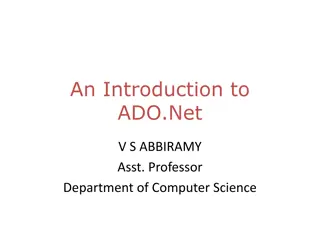Reversing an Obfuscated .Net Application - Exploring Techniques
This article delves into reverse engineering techniques for obfuscated .Net applications, covering steps to analyze and modify the source code effectively. Learn from experts in the field and understand the basics of .Net app development.
Download Presentation

Please find below an Image/Link to download the presentation.
The content on the website is provided AS IS for your information and personal use only. It may not be sold, licensed, or shared on other websites without obtaining consent from the author.If you encounter any issues during the download, it is possible that the publisher has removed the file from their server.
You are allowed to download the files provided on this website for personal or commercial use, subject to the condition that they are used lawfully. All files are the property of their respective owners.
The content on the website is provided AS IS for your information and personal use only. It may not be sold, licensed, or shared on other websites without obtaining consent from the author.
E N D
Presentation Transcript
Reverse engineering an obfuscated .Net application Travis Altman RVAsec June 2012 1
Huge thanks Curtis Mechling http://twitter.com/#!/curtismechling 2
Outline This talk is for all audiences, no experience and seasoned .Net developers I ll be covering basic technology behind a .Net application I ll discuss simple and more complex ways to reverse an obfuscated .Net application Demo reversing an obfuscated .Net app 3
Steps to reverse .Net app 1. Run the application to understand functionality 2. Decompile the application 3. Review source code and hone in on the functionality you re trying to understand 4. If obfuscated look for key constructs to understand functionality 5. Optional: Modify app to achieve your desired functionality 4
Topic not new Many others before me have discussed the insecurities of .Net applications Mark Pearl http://1dl.us/va3 Jon McCoy http://digitalbodyguard.com/ Cory Foy http://1dl.us/va4 5
Reversing and obfuscation What exactly is reversing and obfuscation? Reversing example You re given an EXE and tasked with determining how it performs its functionality, aka secret sauce Could also mean you re trying to subvert functionality such as licensing Obfuscation Equivalent to hiding 6
.Net basics .Net, it s a framework, nuff said Blanket term for microsoft family of technologies Most people think .Net web applications but that s not the focus of this discussion The focus of this talk are stand alone executables written in C sharp although the programming language doesn t really matter 7
.Net basics A stand alone executable built for .Net will run inside the application virtual machine, which sometimes may be referred to as the CLR (common language runtime) The .Net application virtual machine is a requirement for all .Net executables 8
Executables There are two main kinds of EXE s Compiled and interpreted Compiled applications usually require an install, e.g Next > Next Interpreted applications require an application virtual machine So first you ll have to install the application virtual machine before running the interpreted application 9
Executables Compiled executables are often built with a higher programming language, such as C++, which then gets translated to a lower level language known as assembly machine language Due to the nature of compiled executables they are harder to reverse back to original source because of different compilers, architectures, and lack of information during compilation 10
Executables Interpreted executables, such as java and .Net, are much easier to reverse The interpreted compilation (JIT) process is more structured and retains more information about the executable Because of this it s trivial to get original source code from executable I repeat, getting source code is trivial 11
Obfuscation Because it s trivial to get source code from a .Net application developers will use obfuscation to hide a majority of their source code There are a number of tools that will obfuscate your .Net application Most obfuscators will hide things such as variable and class names 12
Determine type executable There are a number of ways to determine the type of executable you re dealing with The tool I like the best is CFF explorer http://www.ntcore.com/exsuite.php Once installed you can simply right click on the executable to view the information via CFF explorer 13
GuessPassword.exe in CFF explorer GuessPassword.exe is a simple .Net application I wrote to check a password We ll continue to use GuessPassword.exe 16
Next step > decompile Now you ve identified the executable was built using .Net Next step is to decompile There are two tools that I like to use to decompile Reflector www.reflector.net (paid) ILSpy http://wiki.sharpdevelop.net/ILSpy.ashx (free) 17
ILSpy 18
Reflector 19
Decompilation tips Only analyze your exe tree and ignore dependencies that get pulled in 20
Decompilation tips Only focus on the real code Real code located in pink bricks 21
SafeAsHouses.exe Let s take a look at a real life example SafeAsHouses.exe can be downloaded from from either download.com or softpedia.com SafeAsHouses is a password keeper, it s designed to keep all your passwords safe in one location 22
SafeAsHouses in ILSpy So soon as we open SafeAsHouses.exe in ILSpy we see signs of obfuscation In the GuessPassword example we see the class names are clearly visible SafeAsHouses masks this information to make it harder to understand the underlying functionality of the application 24
GuessPassword vs SafeAsHouses Next let s compare GuessPassword and SafeAsHouses in ILSpy First GuessPassword 25
GuessPassword vs SafeAsHouses SafeAsHouses 26
More obfuscation Here we see more signs of obfuscation In GuessPassword we see how things should look, we clearly get to see class names in the application In SafeAsHouses however things are hidden Instead of class names all we see are these grey boxes such as STX , ETX , etc STX, ETX, etc 27
Understanding the app Typically you would run the application first to get an idea of the functionality but wanted to show the obfuscation first Run the application 28
Understanding the app If we authenticate with the correct password we are granted access to the application Incorrect password we get denied 29
Items of interest 1. The application asks for input 2. Incorrect password presents a pop up stating Password incorrect 3. The application exits after you click OK when your password is incorrect 4. Successful authentication brings up another window 30
Items of interest The main idea is to take certain areas of interest inside the application and find that functionality Even if the application is obfuscated hopefully identifying an item of interest will lead us to the code we want to reverse I ve highlighted four items of interest but you could easily focus on other areas 31
Searching for items of interest Now that we ve done some recon and understand the type of functionality we want to go after we need to search for that There are a number of ways to search for items of interest but I ll highlight two 1. Decompile all code into one text file 2. Use the Reflector plugin Code search 32
Decompile code into text file Next choose File > Save Code 34
Decompile code into text file Then save the file as a C# single file 35
Decompile code into text file At this point you can use your favorite text editor to search through the decompiled code Disadvantage is that searching through a flat file doesn t present a lot of context On the other hand it s always handy to have a raw dump and the ability to save for historical purposes 36
Reflector code search plugin Reflector s code search plugin is very convenient in that you don t have to leave the reflector tool With the code search plugin you also don t loose the context with where code functionality is located Using code search we ll search for all four items of interest http://reflectoraddins.codeplex.com/wikipage?title= CodeSearch&referringTitle=Home 37
Items of interest 1. The application asks for input 2. Incorrect password presents a pop up stating Password incorrect 3. The application exits after you click OK when your password is incorrect 4. Successful authentication brings up another window 38
Application asks for input A popular way of taking form input in a .Net application is through the text box class where the convention is this.textBox1.Text Here textBox1 is a variable name Most obfuscators will hide the variable name with something like this.STX.Text So better to search for this.*.Text inside the code search reflector plugin 39
Application asks for input Searching for this.*.Text revealed numerous hits, probably best to keep searching for different terms, you might also want to search for just *.Text 40
Pop up message A pop up box is typically done with the MessageBox.Show method Two arguments can be given to this method, window title and window message MessageBox.Show( title , message ) Use code search to see how many message boxes are in the application, the idea is to hopefully pinpoint this functionality 41
Pop up message So quite a few hits on MessageBox.Show, let s continue searching for other constructs 42
Pop up message The pop up message states Password incorrect We should search the code for strings like this No dice, the phrase Password incorrect must be obfuscated 43
Application closes If you enter an incorrect password you ll get a pop up, after clicking OK the application will close .Net can handle this in a couple of ways, with Application.Exit and Environment.Exit Let s search for these terms as well 44
Application closes Less results which means which means less manual reviewing of code 45
Successful authentication opens another window Probably the most popular way to show one window then hide another is to use the window.Show() and window.Hide() methods They are used in tandom Even though they are commonly used in tandom it s a good idea to search for both terms 46
Successful authentication opens another window Only three hits, we re money 47
Code search plugin Using this plugin we were able to narrow down to only three locations where our authentication functionality is most likely hiding Click on each result to view the obfuscated code Look for the other constructs, Environment.Exit, this.*.Text, etc Code search is case sensitive 48
